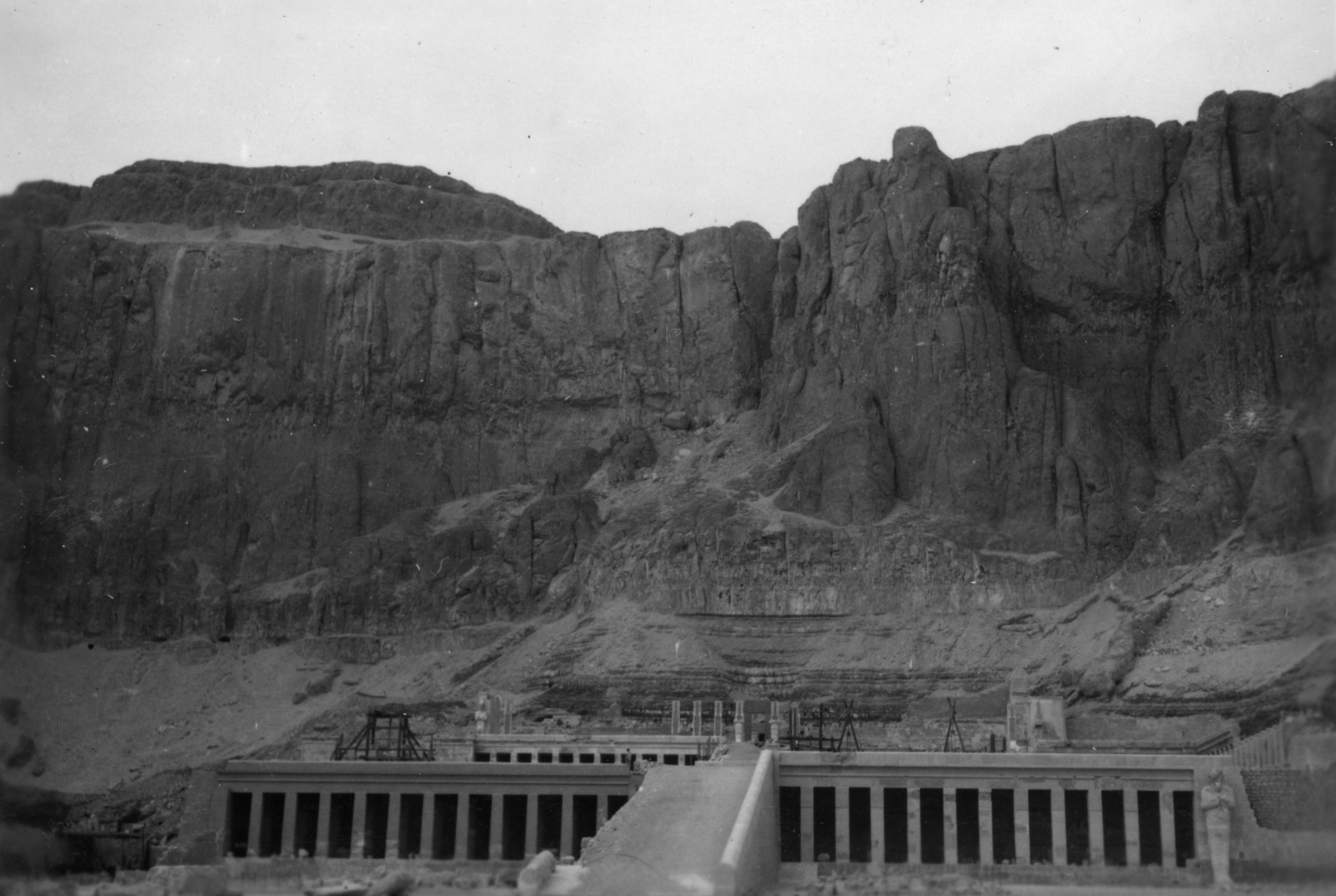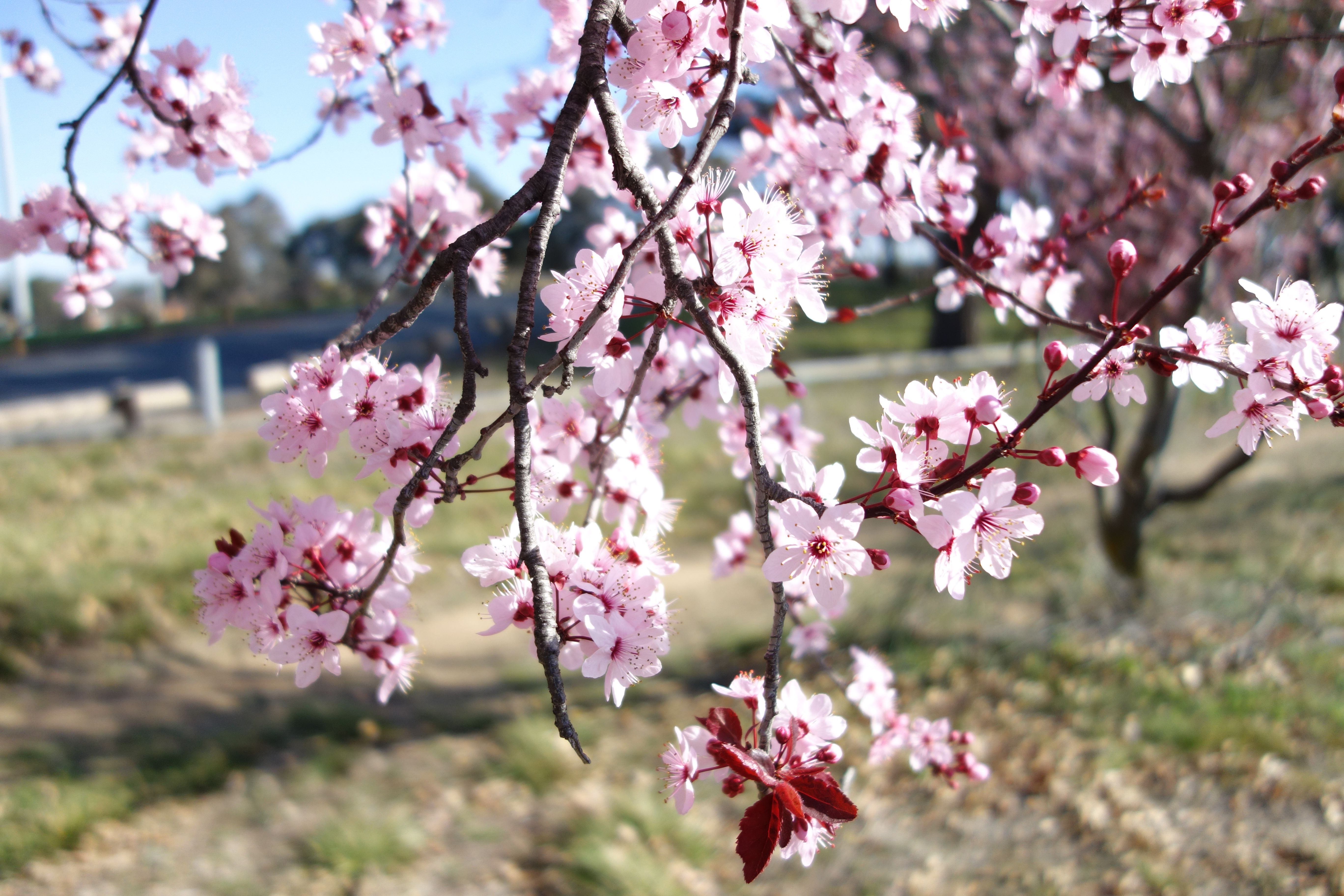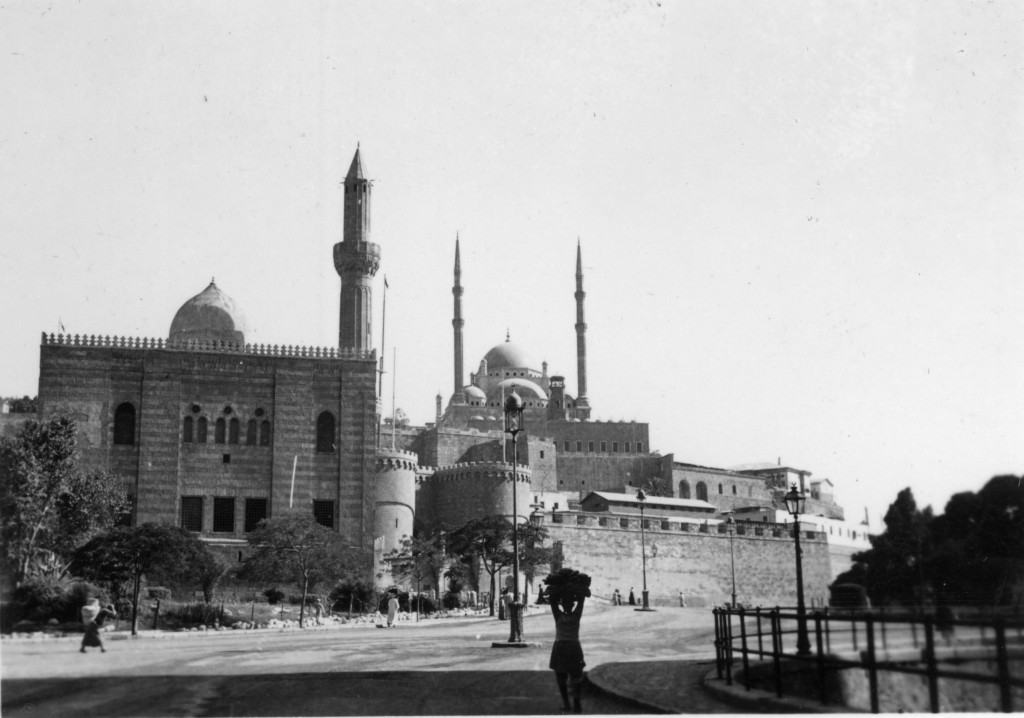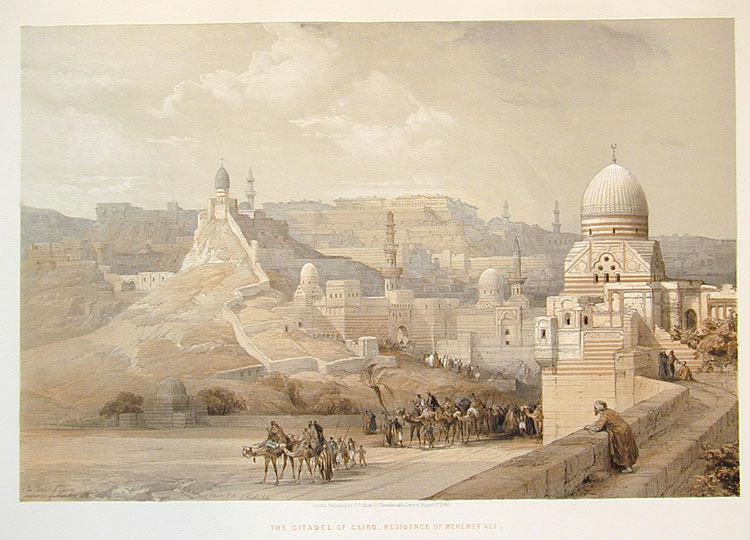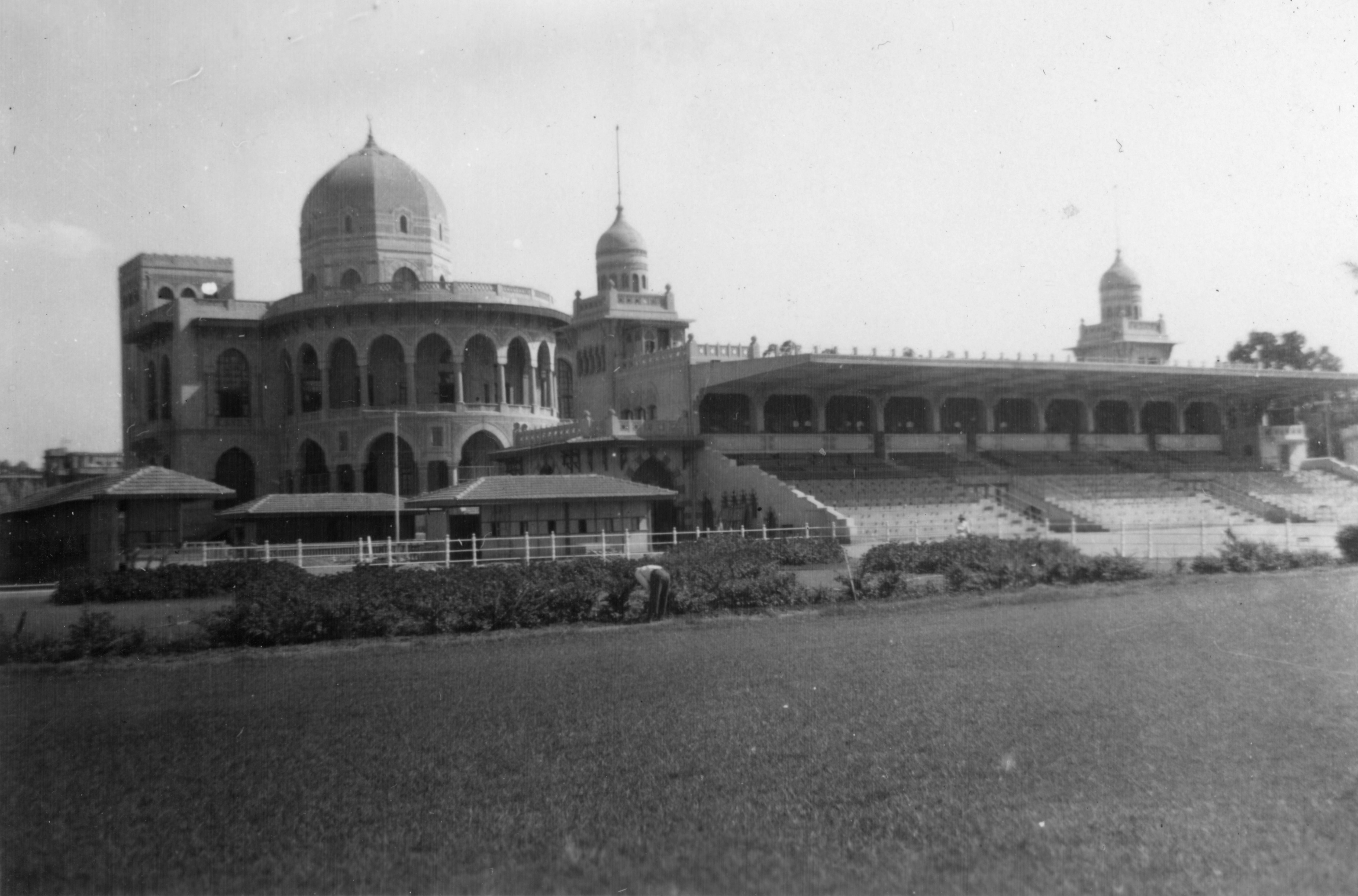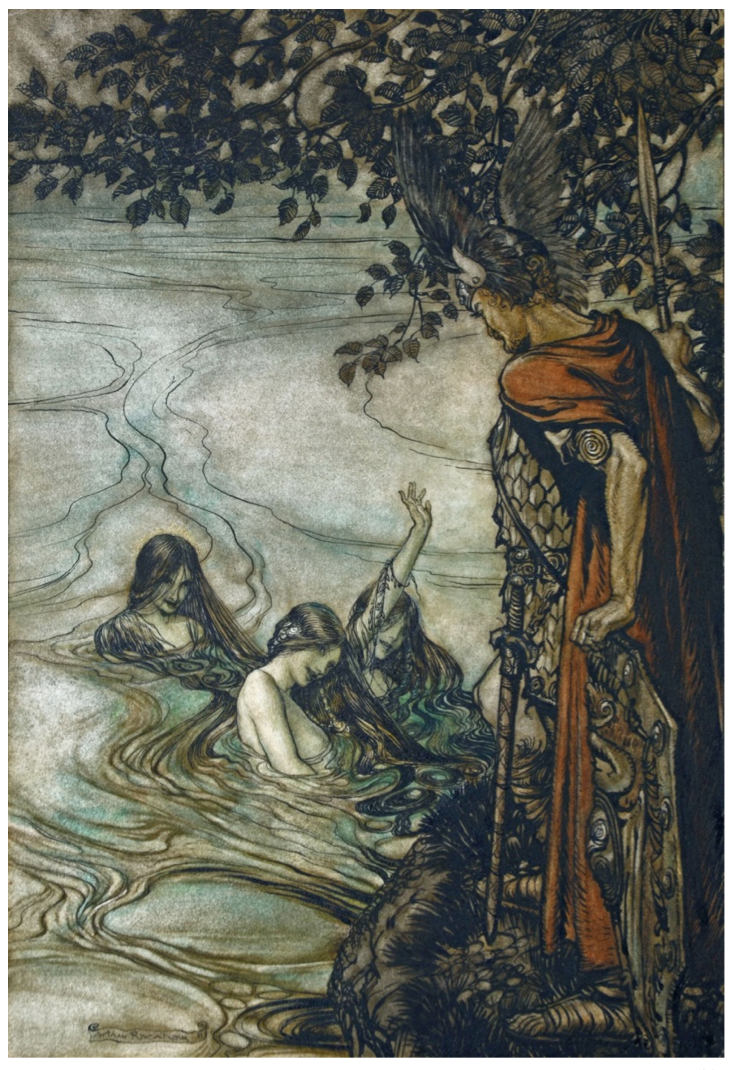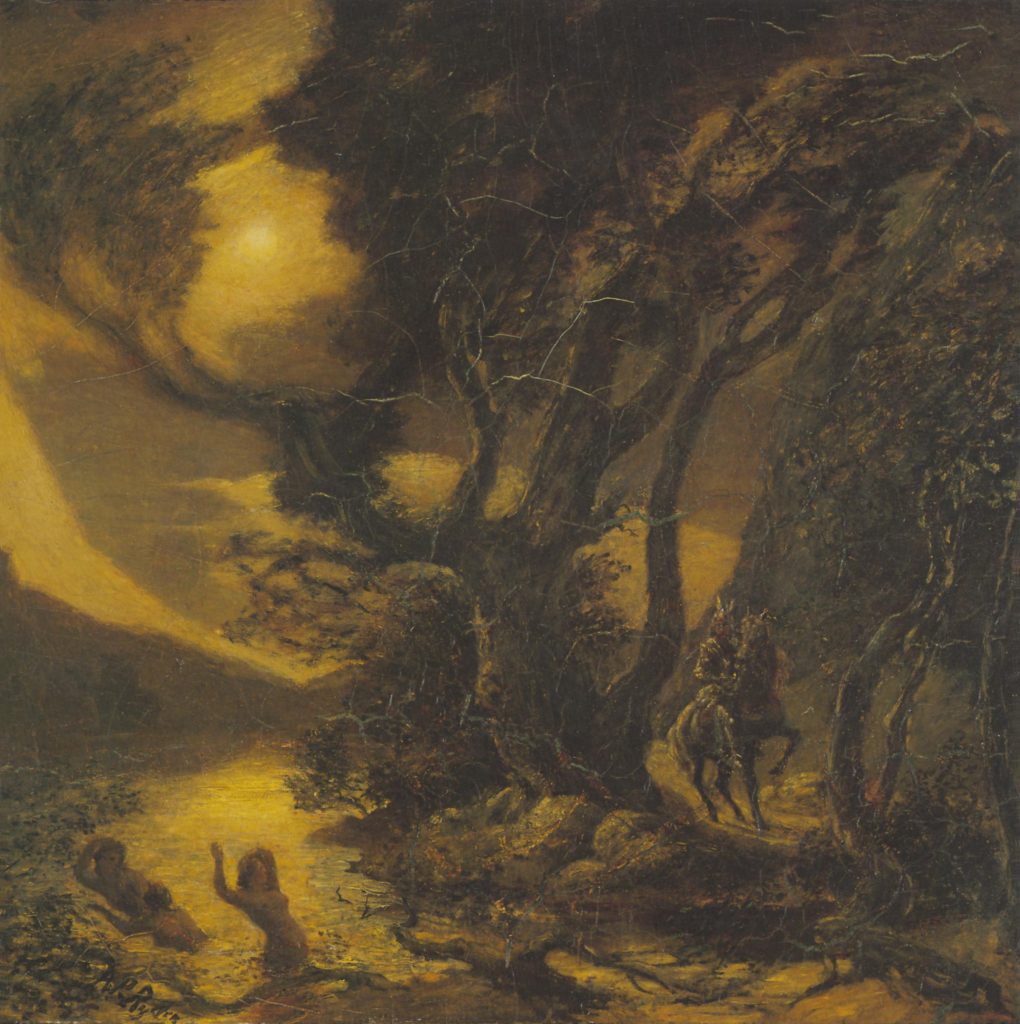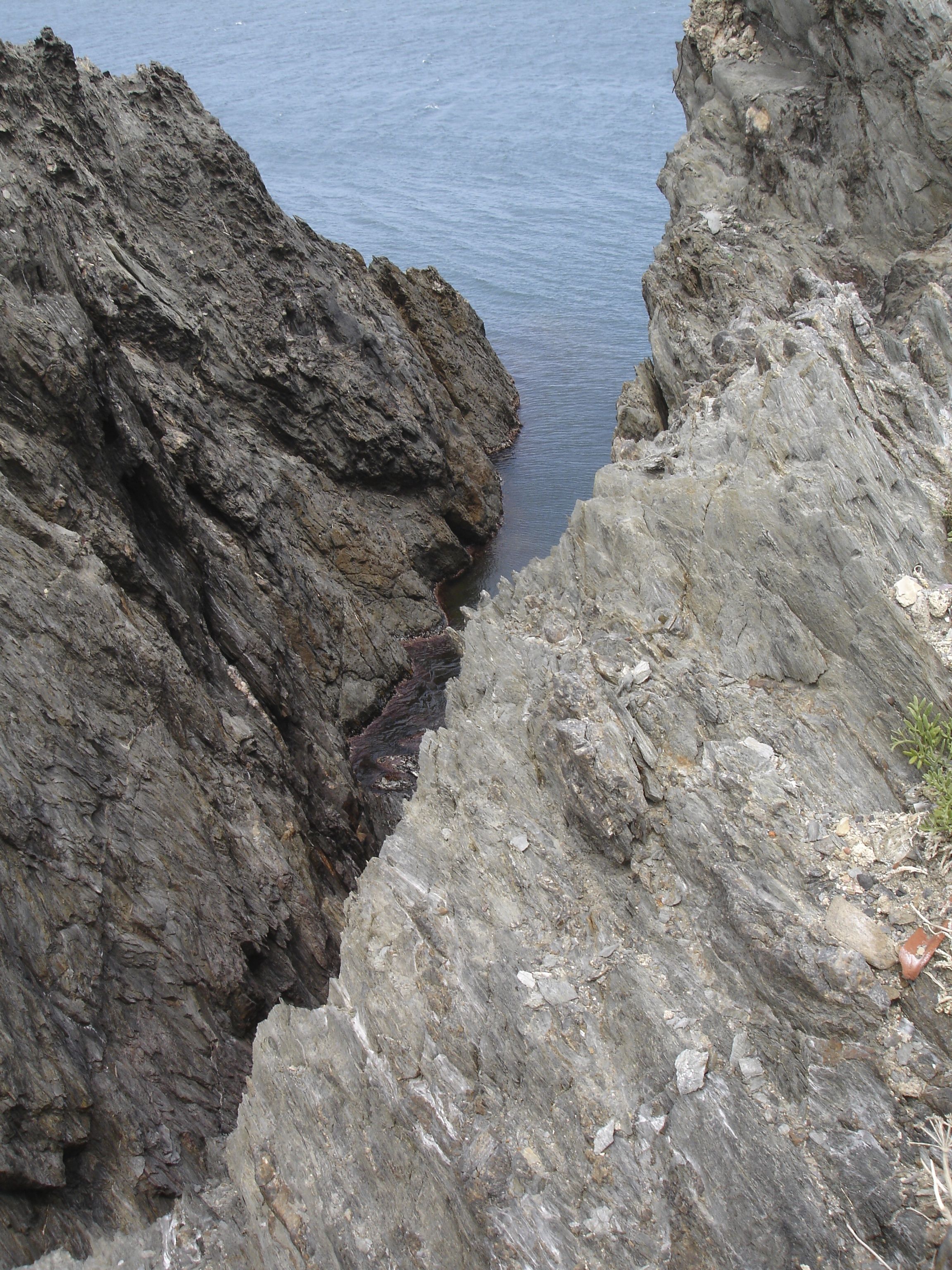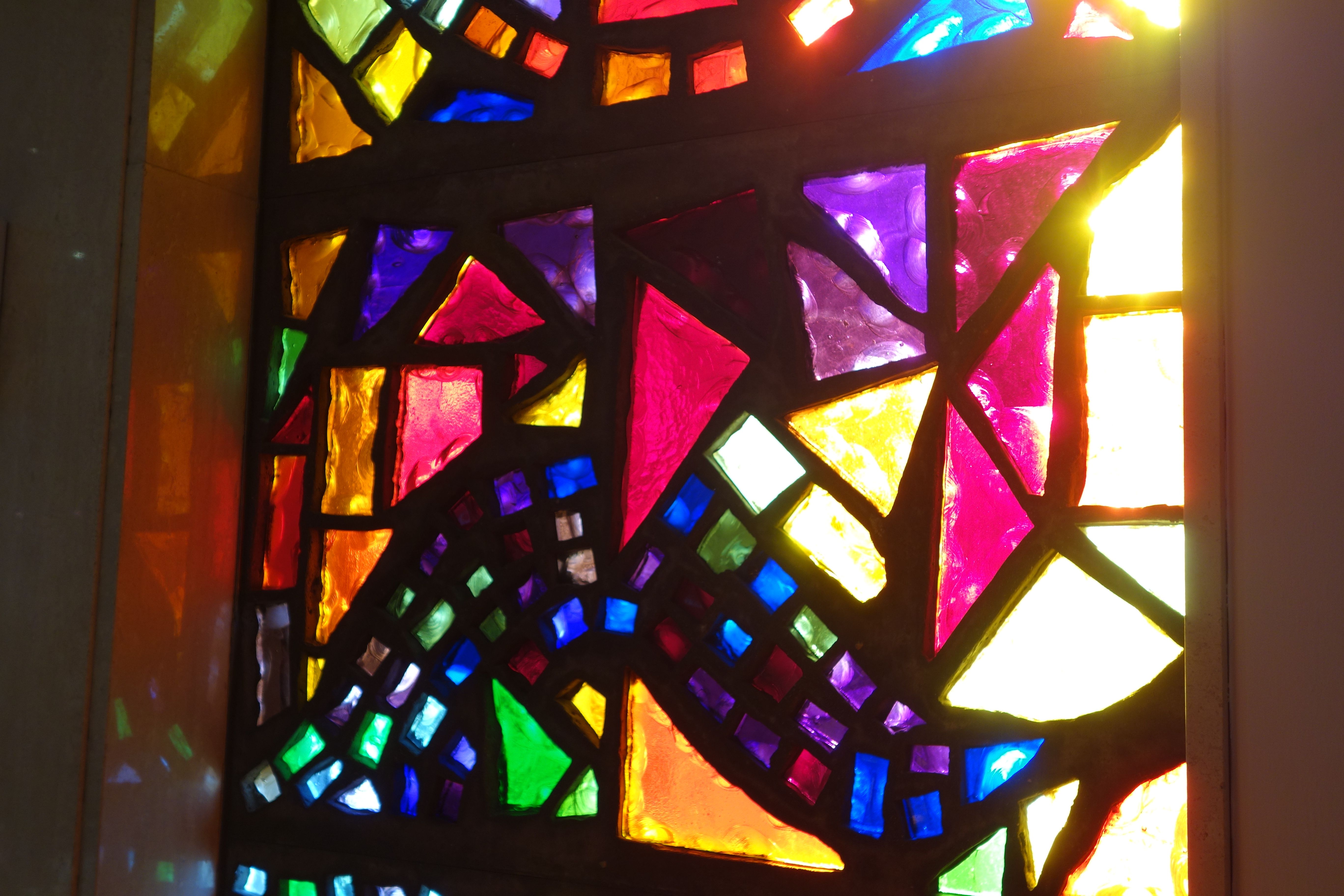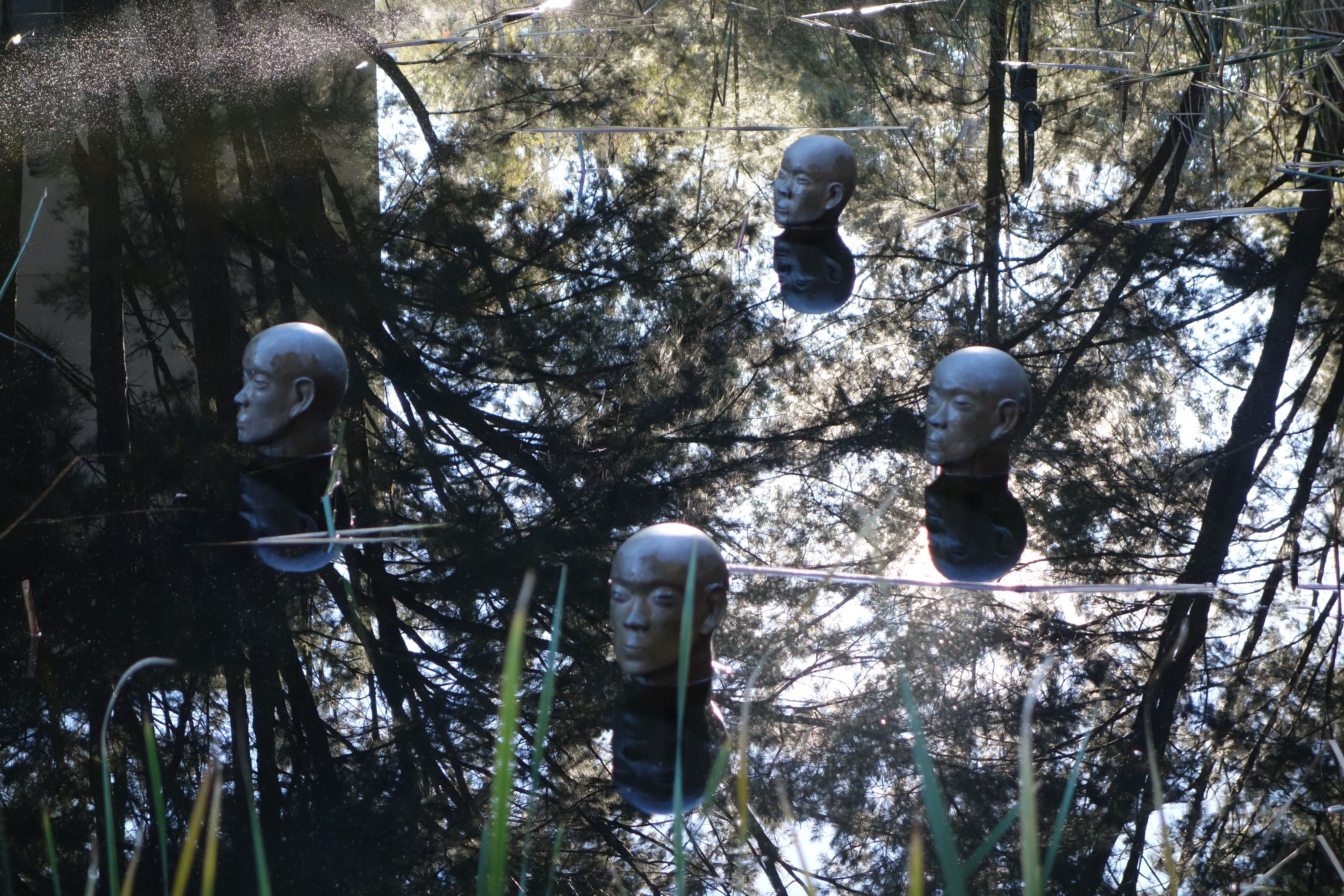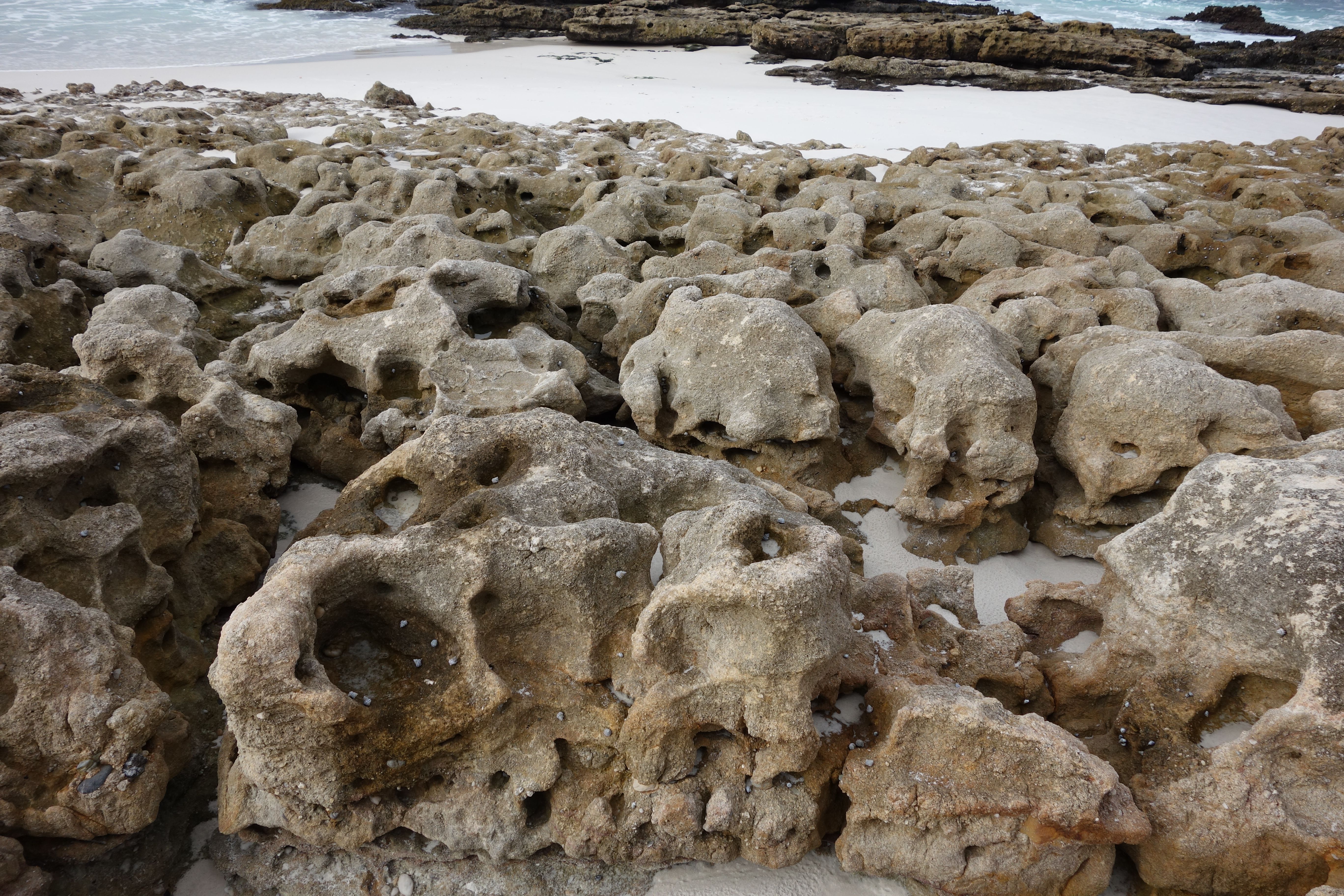
Hidden behind tall cliffs on the west bank of the Nile is the Valley of the Kings, Biban el-Muluk, in Luxor.
And trying to hide in the rock face of the limestone cliff is the temple of Queen Hatshepsut, known as Djeser Djeseru (Holy of Holies or Sacred of Sacreds), which is the main building of the mortuary temple complex at Deir el-Bahri. Hatshepsut ruled from 1473-1458 BC, one of the few women to rule as Pharaoh.
Excavations at the complex began in the 1890s and continued until 1936. There seems to have been some archaeological work in progress when this photo was taken during WWII. New photos available online (for example here), compared with the one above reveal some reconstruction since the 1940s.
The temple complex is a symmetrical structure, 30 metres tall and the length of about two and a half football fields. On the lower terraces there were gardens; fossilised remains of trees have been found lining the walkway to the temple, fragrant incense trees which Queen Hatshepsut had brought back from Punt (south-east of Egypt, possibly present-day Somalia). About 100 colossal statues of her as a sphinx guarded the entrance, and more massive statues of the queen wearing male clothing and a false beard adorned the temple.
The black and white photo above comes from my father’s WWII photo album.
The colour photo below is of statues of Hatshepsut in the Hatshepsut Room in the Metropolitan Museum of Art, New York.
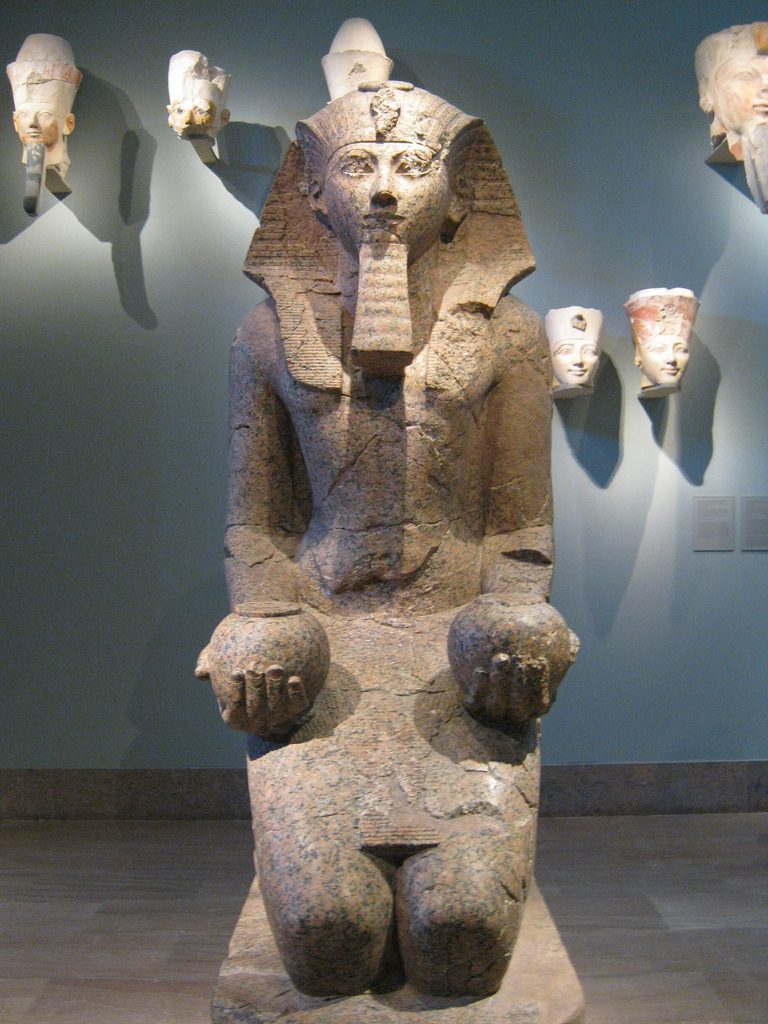
Ailsa came across a few strange hidden things in her travels and posted photos of them on her blog, then asked us to find some things hiding in other parts of the world. Ailsa comes up with fantastic prompts for photos and blogging, and I really appreciate the ideas. Check out her post!

